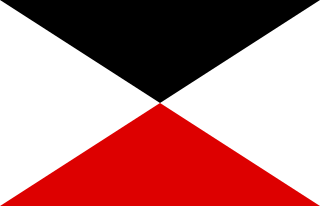
The Guards Corps/GK was a corps level command of the Prussian and then the Imperial German Armies from the 19th century to World War I.

The IV Army Corps / IV AK was a corps level command of the Prussian and then the Imperial German Armies from the 19th Century to World War I.

The III Army Corps / III AK was a corps level command of the Prussian and then the Imperial German Armies from the 19th century to World War I.

The XX Army Corps / XX AK was a corps level command of the German Army before and during World War I.

The XVIII Army Corps / XVIII AK was a corps level command of the German Army before and during World War I.

The XII Army Corps / XII AK was a Saxon corps level command of the Saxon and German Armies before and during World War I.

The XIX Army Corps / XIX AK was a Saxon corps level command of the German Army, before and during World War I.

The XIII Army Corps / XIII AK was a corps of the Imperial German Army. It was, effectively, also the army of the Kingdom of Württemberg, which had been integrated in 1871 into the Prussian Army command structure, as had the armies of most German states. The corps was originally established as the Württemberg Corps Command (Korpskommando) in 1817. It became the XIII Army Corps when it was integrated into the Prussian numbering system on December 18, 1871, shortly after the Franco-Prussian War.

The XIV Army Corps / XIV AK was a corps level command of the German Army before and during World War I. It was, effectively, also the army of the Grand Duchy of Baden, which, in 1871, had been integrated into the Prussian Army command structure, as had the armies of most German states. Both divisions and the bulk of the corps' support units were from the grand duchy. The corps was established in 1870, after the Siege of Strasbourg.

The I Royal Bavarian Army Corps / I Bavarian AK was a corps level command of the Royal Bavarian Army, part of the Imperial German Army, before and during World War I.

The X Army Corps / X AK was a corps level command of the Prussian and German Armies before and during World War I.

The II Royal Bavarian Army Corps / II Bavarian AK was a corps level command of the Royal Bavarian Army, part of the Imperial German Army, before and during World War I.

The XVII Army Corps / XVII AK was a corps level command of the German Army before and during World War I.

The XXI Army Corps / XXI AK was a corps level command of the German Army, before and during World War I.

The XV Army Corps / XV AK was a corps level command of the German Army before and during World War I.

The XI Army Corps / XI AK was a corps level command of the Prussian and German Armies before and during World War I.

The IX Army Corps / IX AK was a corps level command of the Prussian and German Armies before and during World War I.

The VII Army Corps / VII AK was a corps level command of the Prussian and then the Imperial German Armies from the 19th Century to World War I.

The VI Army Corps / VI AK was a corps level command of the Prussian and then the Imperial German Armies from the 19th Century to World War I.

The V Army Corps / V AK was a corps level command of the Prussian and then the Imperial German Armies from the 19th century to World War I.


